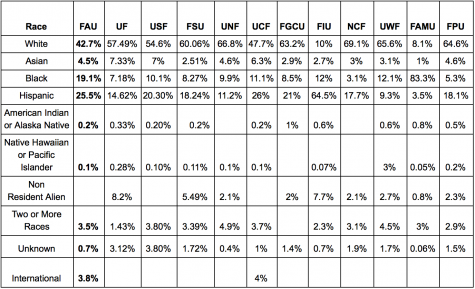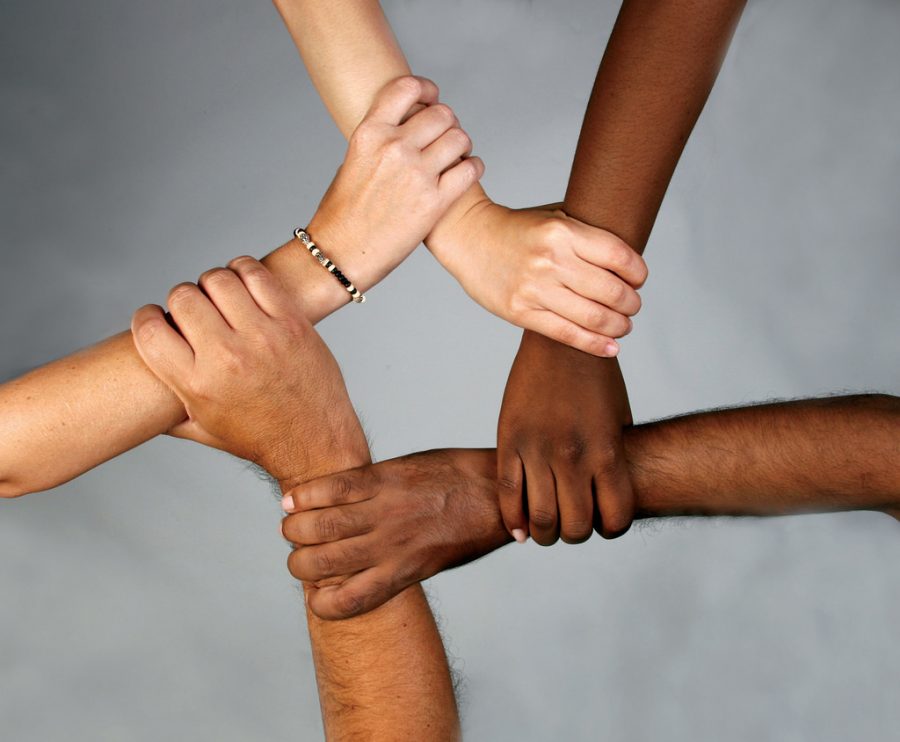FAU is the most diverse university in Florida
The university boasts its ethnic diversity as one of its main pull factors — and it has the statistics to back it up.
FAU ranks ahead of Florida’s 11 other public universities as the most diverse school in the state. Image courtesy of Flickr
October 16, 2018
This story is a part of our print issue on diversity, which looks at differences in beliefs, race, gender/sexuality, age, disabilities, and social class among FAU students and faculty.
Every year at orientation, students hear President John Kelly brag about the diversity of FAU’s student body.
Overall, he’s right. White students make up less than 50 percent of the student population. And FAU’s wide variety of minorities that make up the rest puts the university in the No.1 spot for diversity out of Florida’s 11 other public universities.
The University Press looked at how other Florida schools’ student body match up to FAU in terms of racial statistics, and heard what different groups had to say about diversity on campus.
Asian Student Union (ASU)
The ASU is a community for people to “learn and celebrate Asian traditions and hobbies,” said its events coordinator Anne Vo.
The accounting major transferred from Massachusetts College and said she noticed FAU’s diverse student population immediately.
“Coming here, it was nice to see varying colors and a lot of clubs that celebrate that too.”
Despite this, she said that she’s still experienced discrimination from various students at the university. She added that it seems to only be from older students on campus though.
Vo, who is Vietnamese, tried to keep to herself when an older white man wanted to discuss the Vietnam War with her after asking, “Where are you ‘really’ from?”
Vice President of ASU Sabrina Nguyen, who is also Vietnamese, said that despite feeling welcome at FAU, she’s noticed instances of racism like Vo. The vice president recently overheard a group of students in the Wimberly Library “making fun of Korean eyes.”
The business management major said she came to FAU because of its diversity. She grew up in Naples, Florida where the population was predominantly white, and at school she said, “there were only one, maybe two other Asians, and those were my sisters.”
The two ASU members said that being at FAU has been a welcome change for them. They both added that because the club accepts members regardless of race, they’ve found a family of people who want to learn more about their culture.
National Association for the Advancement of Colored People (NAACP)
The NAACP tries to get the word out to students about current issues affecting minorities like police brutality and midterm election votings, club President Alkeria Jackson said.
Jackson is a health science major who, like Nguyen, chose FAU for its diverse student body. But she said that wasn’t initially the case with Boca Raton.
“When you think about Boca, you think of rich elderly people, and me coming from a small town, I was afraid I wouldn’t see many people my color,” she said. “But I’m so glad I came because the diversity is huge here.”
Jackson said that while she is the only black person at her job, she prefers it that way because she likes to work with people outside of her race. The same goes for FAU, she said.
“When you bring in people of different ethnicities, you get to experience different ideas and beliefs,” Jackson said.
Center for Inclusion, Diversity Education, and Advocacy (IDEAs)
IDEAs highlights traditionally marginalized groups and provides programs to promote diversity and inclusiveness, its website states.
Andrea Oliver, assistant vice president for Student Outreach and Diversity, leads the Center for IDEAs.
Oliver has been at FAU for four years and said that she also picked FAU because of its diversity. She is of Puerto Rican descent and has five biracial children.
“Selecting a diverse and inclusive institution to work for was important to us, and I am sure it is important for others as they select their next home,” Oliver said.
A Step Ahead
FAU ranks ahead of Florida’s 11 other public universities as the most diverse school in the state. The following table has the percentages of each school’s racial groups.

*Information courtesy of each university.*
*Multiple schools did not provide statistics on various racial groups that make up their student body.*
*The UP removed the non-resident alien, unknown, and international statistics because of their nonspecific nature. Several statistics for each group also weren’t provided.*







